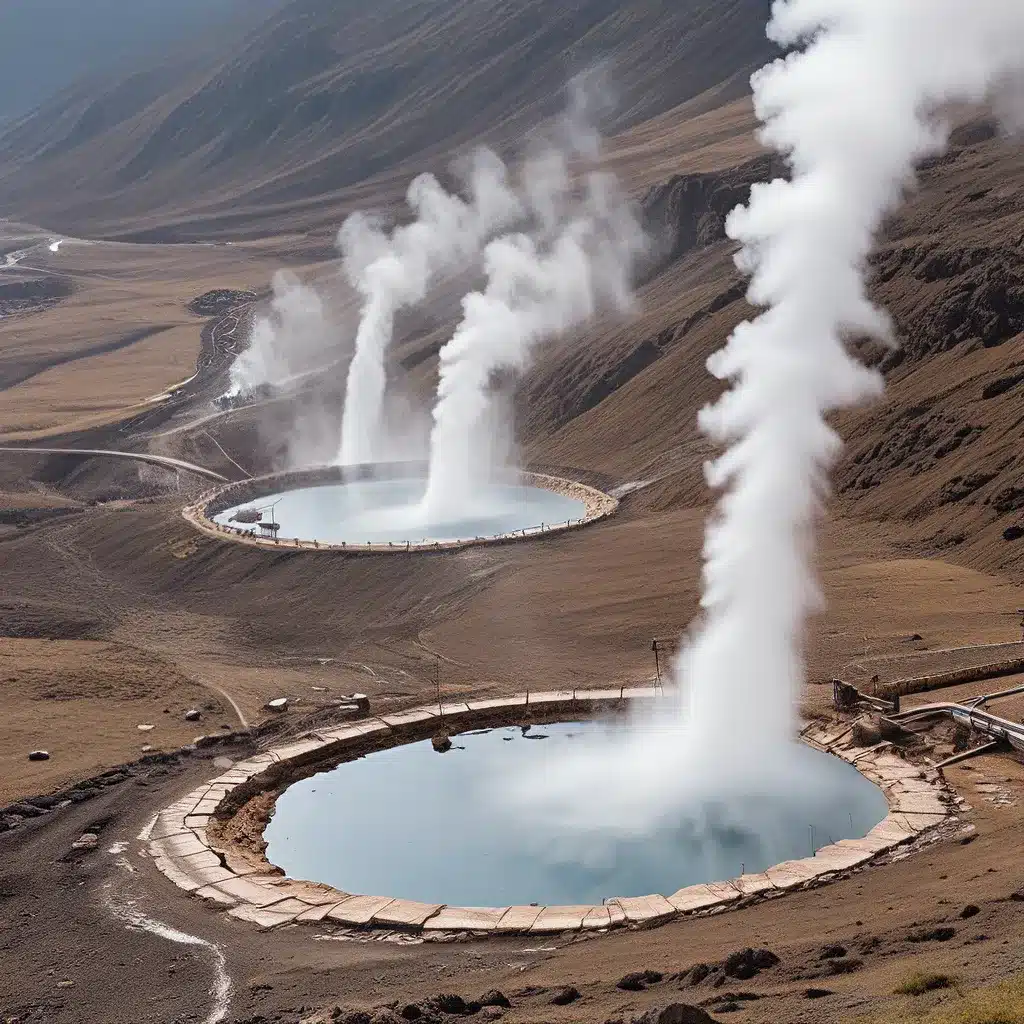
As a renewable energy enthusiast, I’ve been closely following the advancements in geothermal energy and its potential to play a pivotal role in our transition to a clean, sustainable future. In this article, I’ll delve into the fascinating world of geothermal and explore the key policy insights that could help us unleash its full potential.
The Rise of Enhanced Geothermal Systems (EGS)
One of the most exciting developments in the world of geothermal is the emergence of Enhanced Geothermal Systems (EGS). These innovative technologies have been rapidly advancing alongside the oil and gas industry, and they’re now poised to take the geothermal sector to new heights.
What makes EGS so promising? Well, the US Department of Energy estimates that EGS could help propel geothermal from its current 0.4% share of the US electricity supply to more than 10% by 2050. That’s a remarkable transformation, and it’s all thanks to the convergence of cutting-edge drilling techniques, subsurface fracturing expertise, and reservoir modeling capabilities.
Just imagine – oil and gas companies, federal agencies, and ambitious startups are coming together to unlock the true potential of geothermal energy. It’s like a clean energy dream team, and the results are already starting to show. Successful deployment of several commercial-scale EGS projects will be crucial to de-risk the technology and pave the way for widespread private sector investment.
The Funding Gap: Bridging the “Valley of Death”
One of the key challenges facing the geothermal industry is the need for government funding to help technologies cross the “valley of death” between demonstration and commercialization. A comparison of federal support for EGS and hydrogen shows how support to EGS could be improved.
While recent US funding initiatives for EGS, including $44 million for the DOE’s Frontier Observatory for Geothermal Energy Research (FORGE) and up to $165 million to transfer best practices from oil and gas, are commendable, they pale in comparison to the $9 billion earmarked for clean hydrogen development.
It’s worth noting that clean hydrogen is only projected to be necessary for specific industrial and transport applications that are difficult to decarbonize, while geothermal can provide baseload power to the grid with no emissions, enabling meaningful decarbonization across many sectors of the economy.
Furthermore, geothermal developers may require a tax equity investor to obtain a benefit, losing some of the value of the tax credit, unlike their clean hydrogen and carbon capture counterparts who can access production tax benefits through direct payment.
To truly unlock the potential of geothermal energy, policymakers need to level the playing field and provide the necessary funding and incentives to support its growth.
Navigating the Leasing and Permitting Maze
Another significant hurdle for the geothermal industry is the complex leasing and permitting process, especially on federal lands. Most areas with the best subsurface characteristics for EGS are situated on federal land, bringing them under the jurisdiction of the Bureau of Land Management (BLM). Unfortunately, the staffing levels for geothermal applications lag behind those for oil and gas development, making it incredibly challenging for geothermal companies to navigate the approval process.
The good news is that geothermal development continues to move forward on public land, with the BLM preparing environmental assessments for 53 parcels totaling 161,503 acres across Nevada for a proposed statewide geothermal lease sale in November 2023. However, timely parcel auctions and balanced consideration of geothermal leases are pivotal to fostering industry growth and meeting the administration’s goal of a carbon pollution-free power sector by 2035.
Interestingly, the permitting process for geothermal projects on federal lands is similar to the process for new oil and gas projects, but oil and gas projects benefit from certain review exemptions under the National Environmental Policy Act (NEPA). A 2019 DOE report estimated a 7-10 year average geothermal project development timeframe that could include up to 6 NEPA analyses, which is significantly longer than the 3-5 year average for oil and gas well development.
Overcoming Transmission and Infrastructure Challenges
One of the final hurdles for the geothermal industry is the challenge of transmission access and interconnection timelines. Many of the most promising regions for geothermal siting are in remote areas of the western US, far from existing transmission infrastructure. Lengthy delays of up to seven years, combined with timing uncertainty, can undermine project financing for geothermal EGS developers.
However, EGS developers could potentially address this obstacle through partnerships with energy-intensive consumers like data centers and green hydrogen projects to provide 24/7 clean power generation, circumventing the need to access transmission lines. While this workaround doesn’t bring clean baseload power onto the grid to decarbonize it for most consumers, it demonstrates the industry’s ingenuity in finding creative solutions to the challenges it faces.
The Path Forward: Collaboration and Commitment
As I’ve explored the fascinating world of geothermal energy, it’s clear that unleashing its full potential will require a collaborative effort between policymakers, industry stakeholders, and the public. We need to address the funding gap, streamline the leasing and permitting process, and find innovative ways to overcome transmission and infrastructure challenges.
By working together, we can unlock the huge potential of geothermal energy and make it a key component in the clean energy transition. It’s an exciting time, and I can’t wait to see what the future holds for this powerful, renewable resource.
So, what are we waiting for? Let’s dive deeper into the world of geothermal and explore the possibilities for a cleaner, more sustainable future.

